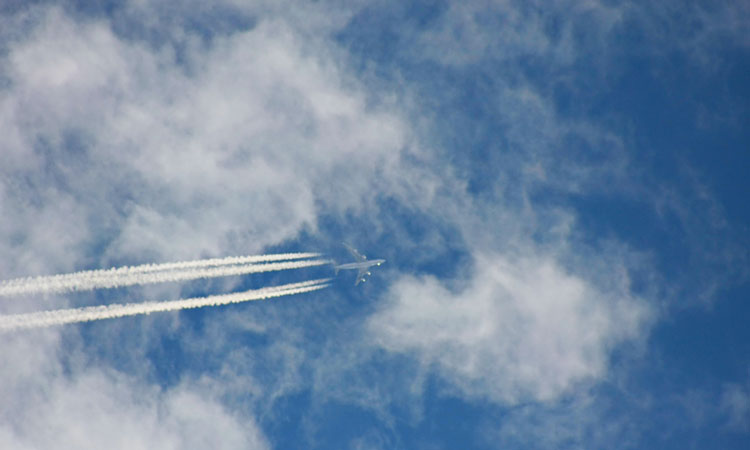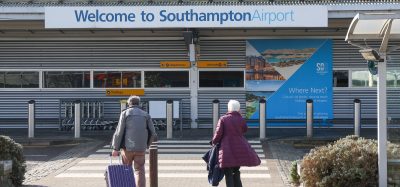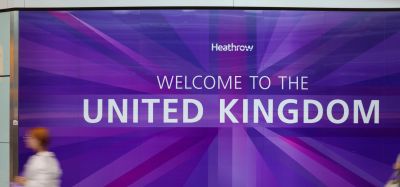UK Transport Secretary presses urgency of airspace modernisation
Posted: 7 March 2019 | International Airport Review | No comments yet
At the Airport Operators Association (AOA) annual dinner, Chris Grayling explained that reforming UK airspace is vital to meet the growing needs of the industry.


He commented that modernising our airspace to meet the demands of the 21st century is “among the most pressing of tasks”.
Speaking at the Airport Operators Association annual dinner on the 5 March 2019, the Transport Secretary set out that the UK airspace is structured for propeller driven planes of the 1950s, and is not efficient enough to meet the demands of the jet plane age.
Reforming the UK airspace is vital so that:
Join us live: Shaping the Next Generation of Hold Baggage and Air Cargo Screening
Join us live for an insightful webinar on 11th December at 14:00 GMT, in collaboration with Smiths Detection, as we explore the strategic balance of operational efficiency, regulatory compliance, and sustainability in high-volume security environments.
This session offers a focused look into future-proofing your security strategy.
Key learning points
- Cost Reduction: Strategies to minimize bag travel time while simultaneously reducing operational costs.
- Regulatory Roadmap: Insights into the next wave of regulatory changes and their impact on future investment decisions.
- Sustainable Systems: Practical approaches to building sustainability into security systems and lowering the total cost of ownership (TCO).
- Scalable Solutions: Real-world examples of scalable systems supporting current airport growth and preparing for tomorrow.
Register now for expert insights, case studies, and actionable strategies on operational efficiency!
- We can make better use of new technology to cut aircraft noise and carbon emissions
- Passengers can continue to enjoy good value flights to the widest possible range of destinations
- Holidaymakers’ long-awaited breaks are not wrecked by flights that fail to leave on time.
The Transport Secretary, Chris Grayling, said: “Like our infrastructure on the ground, reforming the way we use our airspace is vital if we want to help deliver quicker, quieter and cleaner journeys for passengers and businesses. Last year the government set out our clear support and political backing for airspace modernisation. Airports will now be engaging with local communities to ensure they gain a deeper understanding of this complex yet crucial issue.”
The speech plainly demonstrates the government’s support for the long term national airspace modernisation programme, with formal consultations starting in 2021 led by airports and NATS, the UK’s leading air traffic control services provider.
The UK has a longstanding commitment to Flexible Use of Airspace (FUA), a cooperative approach where some sections of airspace are shared by civil and military air traffic. For example, areas classed as ‘Managed Danger Areas’ can effectively be turned ‘on’ to allow for tactical freedom to undertake vital training, or turned ‘off’ to allow aircraft carrying passengers to fly through.
Following the Civil Aviation Authority’s approval of the MoD’s plans for airspace change, NATS supported the project by designing the airspace and working with other airspace users. Part of this work involved coming to an agreement to allow segments of the enlarged area to be suppressed when weather dictates civil aircraft must fly a northerly route, to ensure the North Atlantic flows from Europe to the USA are unaffected. Additionally, a new cell was set up at NATS’ Swanwick Centre to allow the MoD to hand back segments of the Danger Area when they are no longer required, ensuring the expeditious flow of civil aircraft continues.
Join our free webinar: Revolutionising India’s travel experience through the Digi Yatra biometric programme.
Air travel is booming, and airports worldwide need to move passengers faster and more efficiently. Join the Digi Yatra Foundation and IDEMIA to discover how this groundbreaking initiative has already enabled over 60 million seamless domestic journeys using biometric identity management.
Date: 16 Dec | Time: 09:00 GMT
rEGISTER NOW TO SECURE YOUR SPOT
Can’t attend live? No worries – register to receive the recording post-event.
Related topics
Aeronautical revenue, Air traffic control/management (ATC/ATM), Airport development, Economy, Emissions, Passenger experience and seamless travel, Regulation and Legislation, Sustainability
Related organisations
Civil Aviation Authority (CAA), Department for Transport (DfT), Ministry of Defence (MoD), National Air Traffic System (NATS)


















